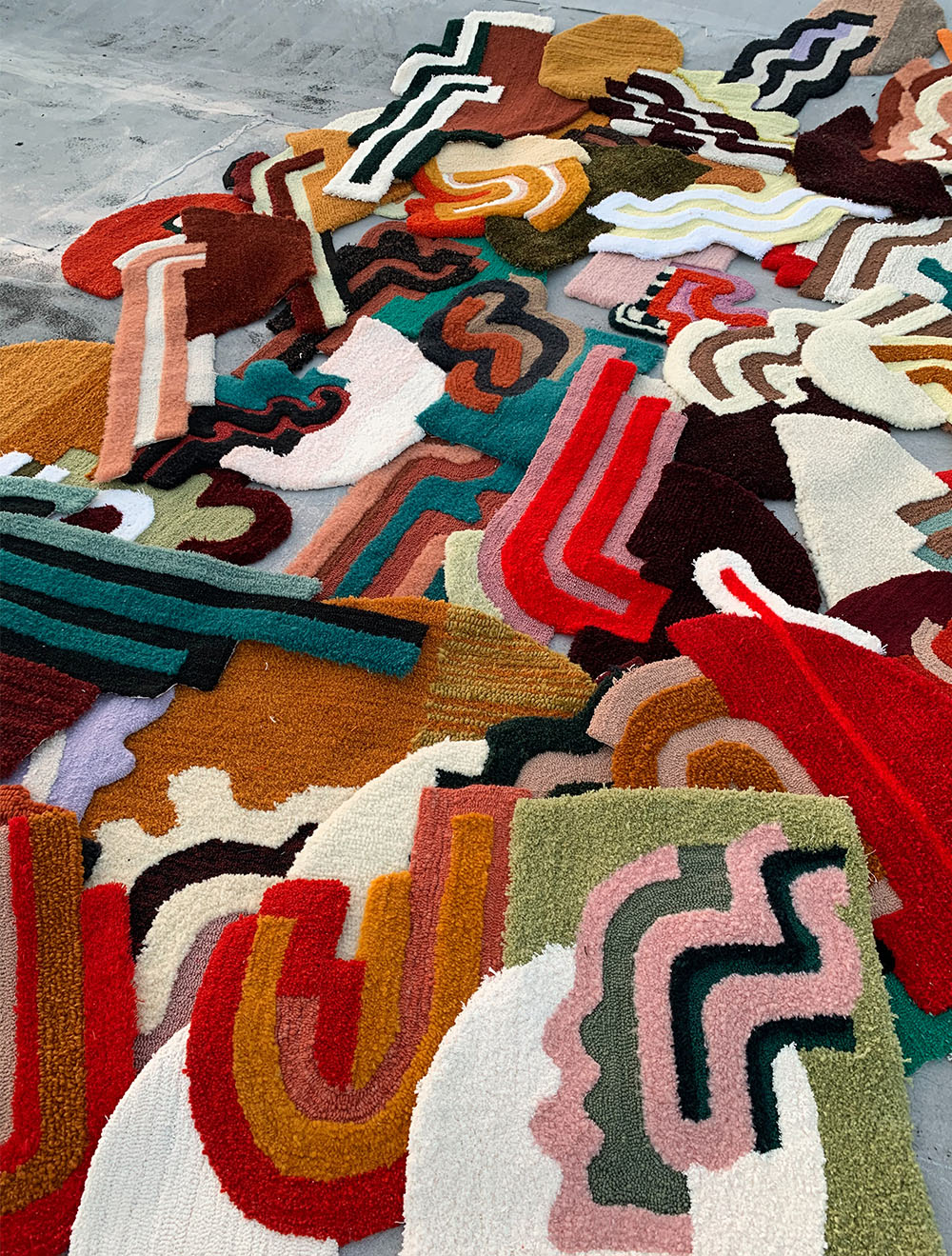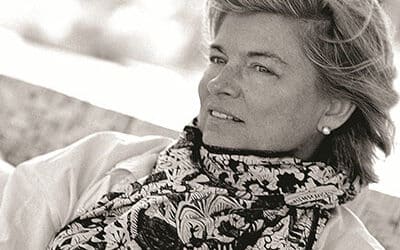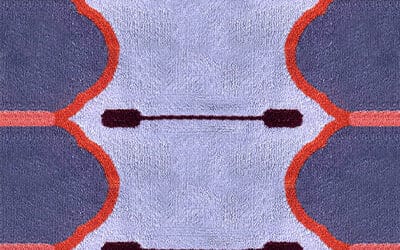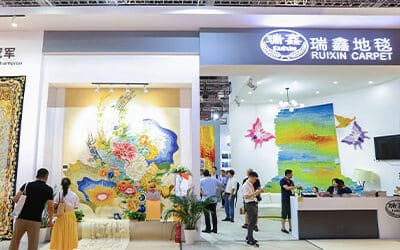Just Like Heaven by British band The Cure is artist Caroline Kaufman’s backing track for her speed ramped Instagram video where her tufting gun races across tautly framed Monk’s cloth. ‘Show me, show me, show me how you do that trick’ is a line from the lyrics, and it’s a question many of her +76,000 IG followers want answered. Just what is that gun-like tool, they ask, that enables her to create exuberant and joyful tufted tapestries?
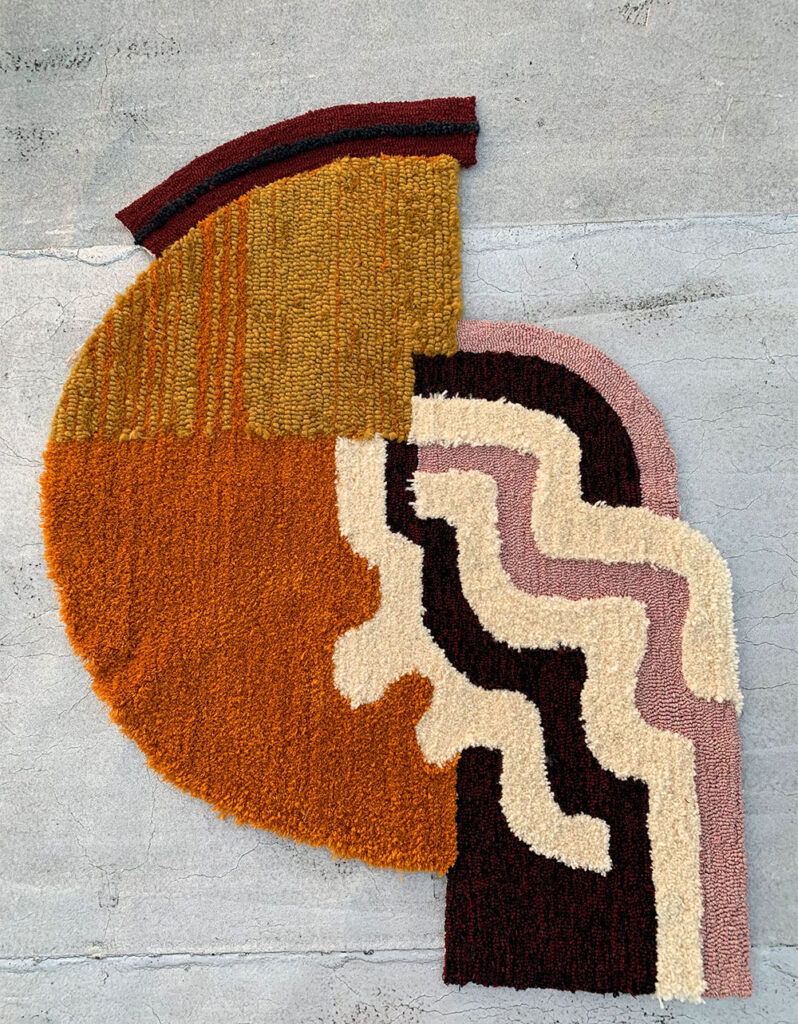
The answer is no surprise if you’re in the rug world, but rather magical if you are not. The tool is an electric gun tufter—a modern device that breaks from the centuries-old conventions of hand-weaving and hand-knotting. ‘Tufting is having a moment,’ says Kaufman (we agree, see ‘Drawing Inspiration’ COVER Spring 2020). ’I started tufting in 2018, but I bought the gun on eBay in 2016.’ There’s a comedic pause before she adds, ’the manual was in Mandarin’. Trial and error enabled Kaufman to wield the gun correctly. She sources natural fibre yarns from dead stock and mill ends, but it took several attempts to discover the right backing cloth. ‘It has to be a specific open weave because the gun point goes between the warp and the weft, if it’s too tight it tears the fabric.’
Kaufman’s caption for her video with The Cure track describes the design as ‘the moment you realize the finish line doesn’t exist, and all we have are the pieces of life in between’—a poeticism worthy of The Cure’s Robert Smith. ‘Writing constrained by a small space is another form of expression. It goes hand-in-hand with my visuals, like a digital sketchbook.’ Kaufman’s studio is in a lively shared industrial space in Brooklyn. She describes her pink-infused apartment as The Park Slope Treehouse. The moniker explains the preponderance of plants, but also refers to the cozy sheltered feeling it exudes from photos on Instagram. Allied to the magic of her ’treehouse’ is an idyllic work-live space in a former ferryboat in California, but more on that to come.
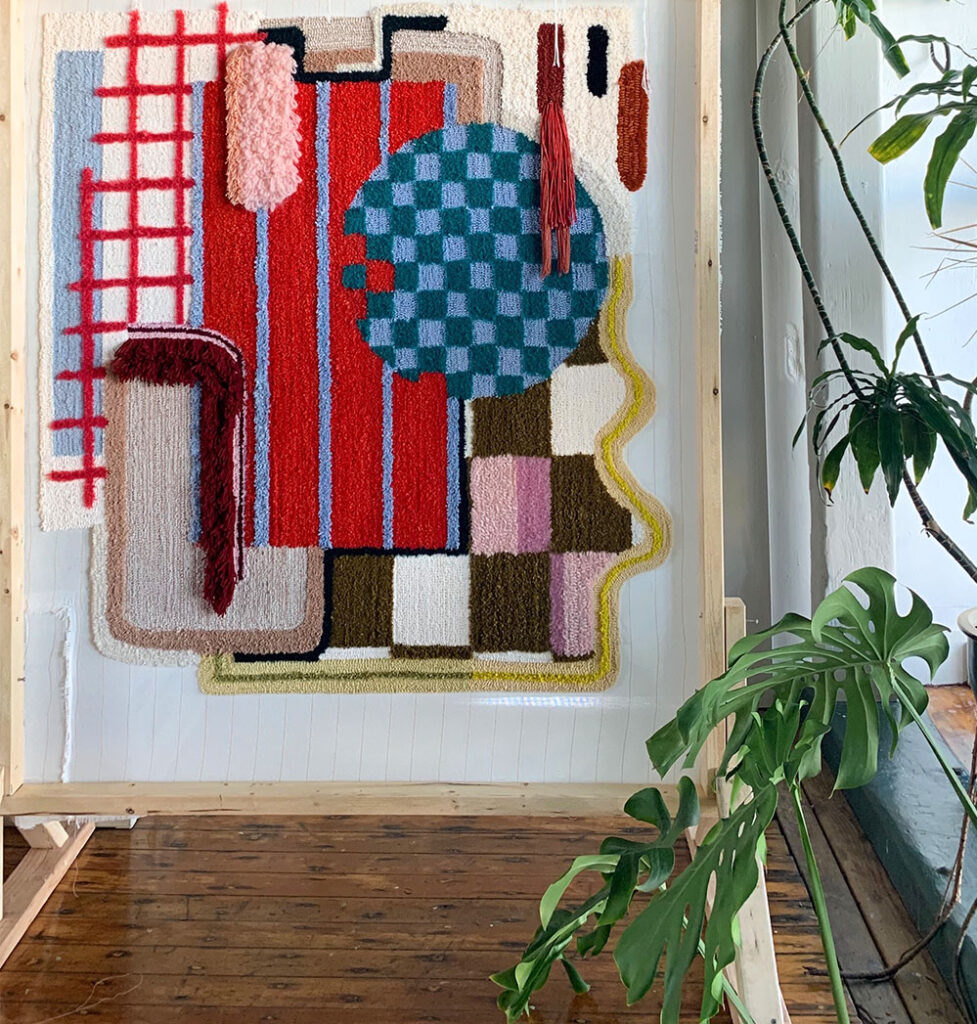
‘I’m having a crisis today,’ Kaufman confesses. ‘I’m just wasting my youth in quarantine.’ But Kaufman is only 28. Funny and down-to-earth, she voices this ‘complaint’ while knowing quarantine will end long before her youth does. Nevertheless she’s concerned by the ‘new normal’ and the exodus of people from the city. ’I’ve lived in Brooklyn ten years, but now we have to navigate all the things you assume will never change. But we’re hanging in, finding new opportunities. I can find the good.’ Born and raised in West Virginia, her childhood was full of craft, makers, textiles and inspiration and encouragement from her artist mum and her dad. Despite her BFA in Fashion Design from Pratt Institute, it’s perhaps no surprise given childhood influences that her practice has evolved from fashion and knitwear (including a retail collection for Anthropologie) to translating her paintings, drawings and notebook ideas into story-based textile art.
Tufting is faster than weaving or hand-knotting and allows the artist to deviate from grid-based patterns to include swoops and swirls. Kaufman’s largest tapestry to date is 8 foot square. ‘I’m not scared of size,’ she emphasises, ‘but any larger and I’d need to learn how to attach sections.’ Her tapestries tend towards free-form shapes allied to pleasing geometrics like checkerboard patterns. She describes how a thought ‘looks like a solid unmovable shape’ while her feelings might translate into ‘wiggly lines’ that dance ‘between your heart and head’.
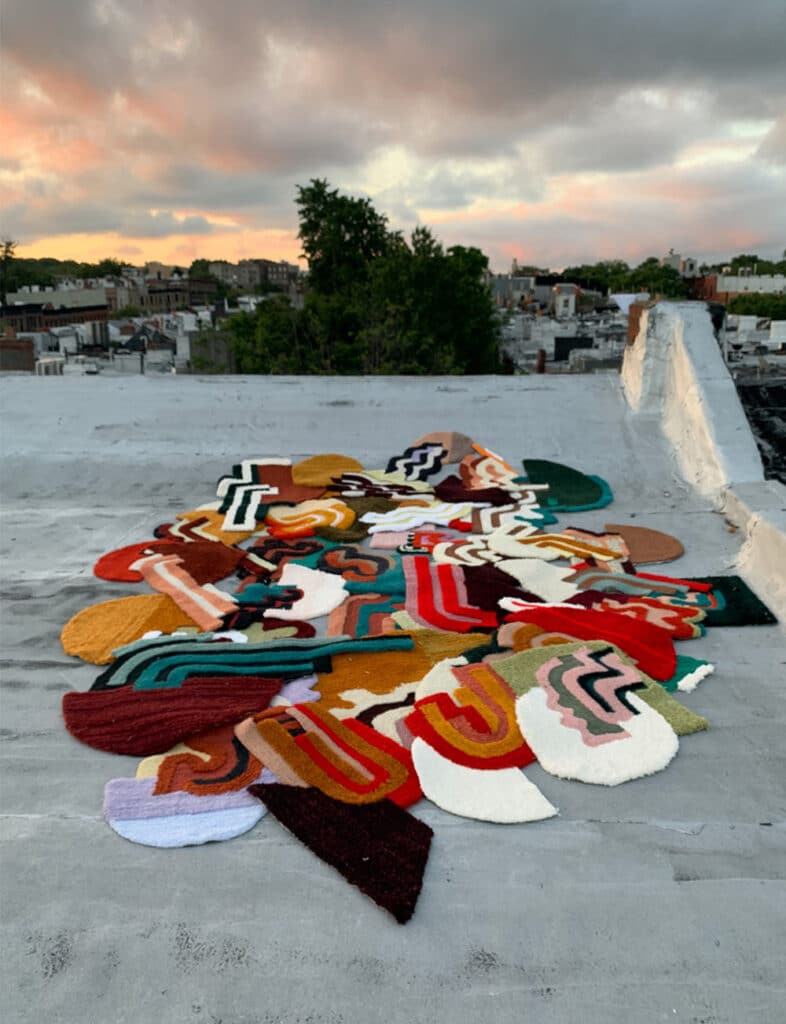
Kaufman arranged dozens of small tapestries in two sizes (34” x 22” and 46” x 34”) into an impromptu group portrait on the roof of her building. Commissioned by a New York-based arts hotel group for their soon-to-be-opened Brooklyn location, the small wall tapestries are destined for the hotel’s guest rooms. Kaufman’s ad hoc grouping creates the abstract vitality of a painting by modernist Stuart Davis while the colours reflect her love of David Hockney and her belief colours have ‘feelings’. Anyone who is unconvinced tufting can be an art form in the right hands should consider how Hockney used prosaic ‘tools’ like Polaroid cameras and fax machines to transform images he made with these devices into fine art.
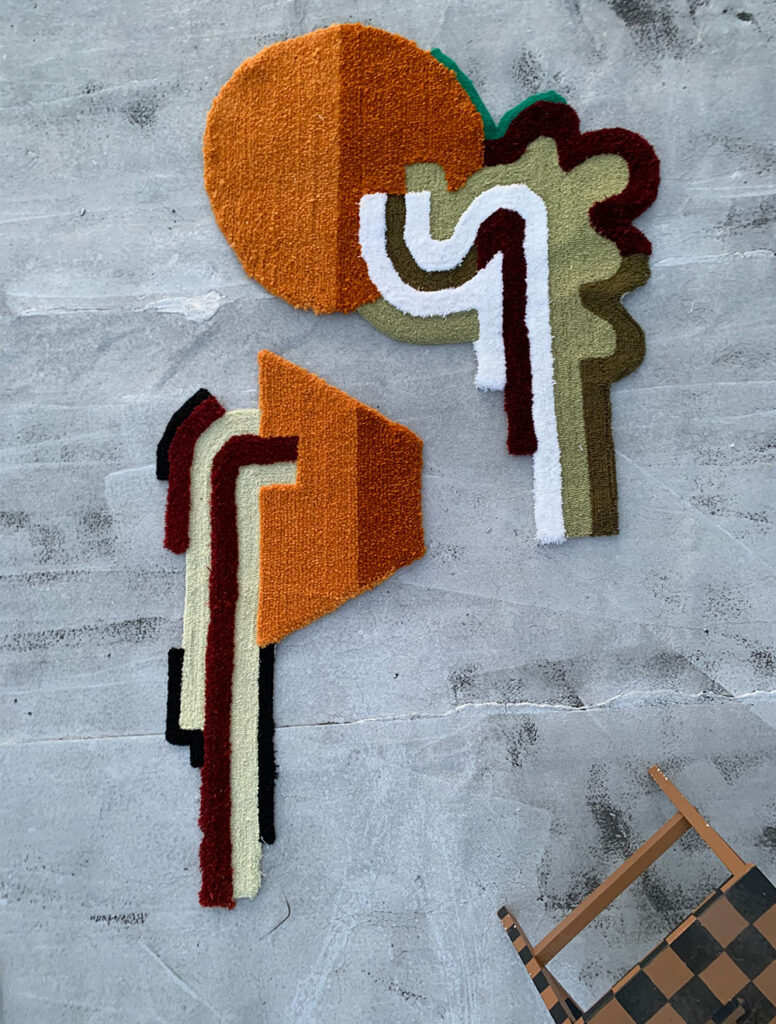
But back to magical dwellings. Kaufman’s Park Slope ‘treehouse’ is magical, and so too is a former ferryboat in Sausalito across the bay from San Francisco that hosts invitation-only creatives for live-work Varda Arts Residencies. A single experience of VAR is an extraordinary gift, but Kaufman has been invited back four times. She exhales in gratitude and says, ‘It’s one of the blessings of my life.’ Her initial residency created a huge positive push for her practice. She marvels how ‘the amount of work I complete there in a month is equivalent to four months in New York’.
The concept of a ’vessel’, whether real like SS Vallejo or as a metaphor, holds deep meaning for Kaufman. ‘Art is the vessel of my expression,’ she says. Her inner voice may be ‘skeptical’ at times, but she ‘leans towards goodness and solutions’ to ‘make sense of the ups and downs and sideways’ world we inhabit. Goodness resonates in Caroline Kaufman’s tufted tapestries while they also communicate almost inexplicable feelings we choose to translate as something ‘just like heaven’.
—

